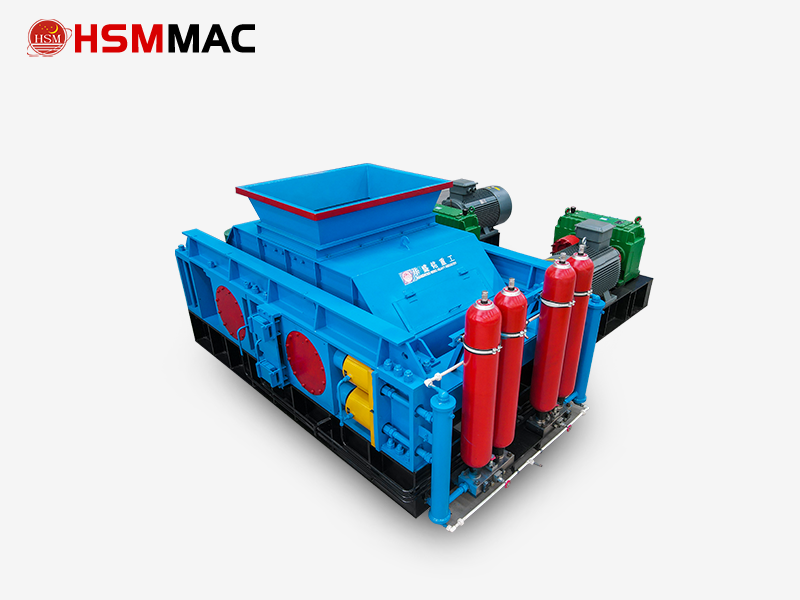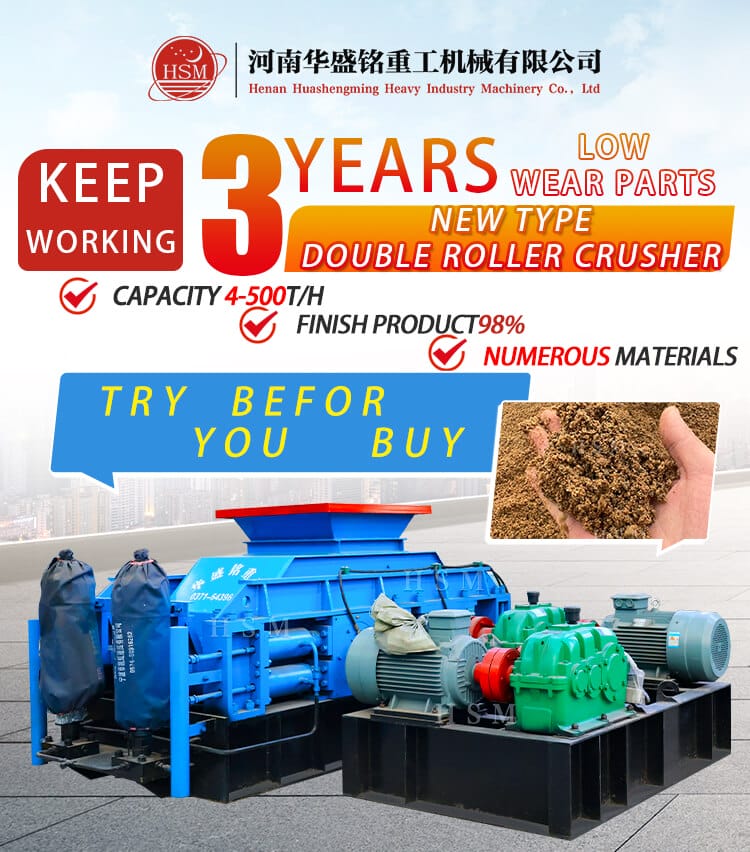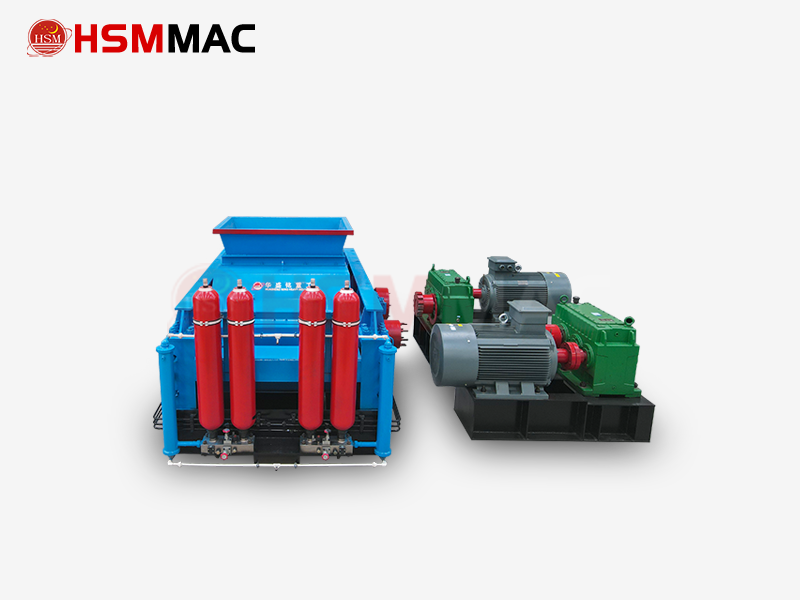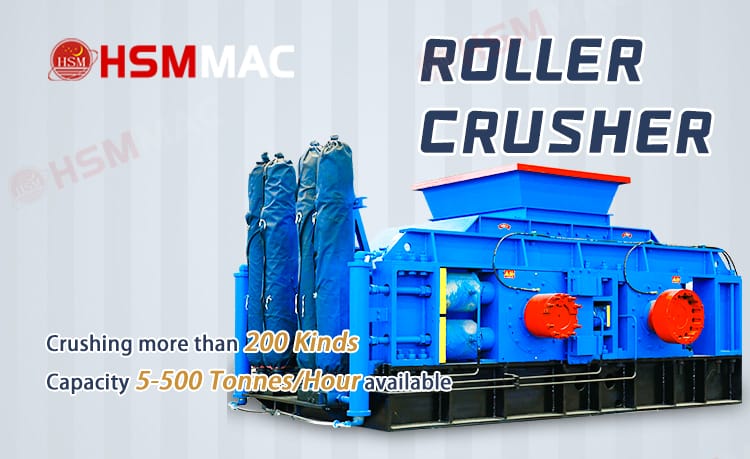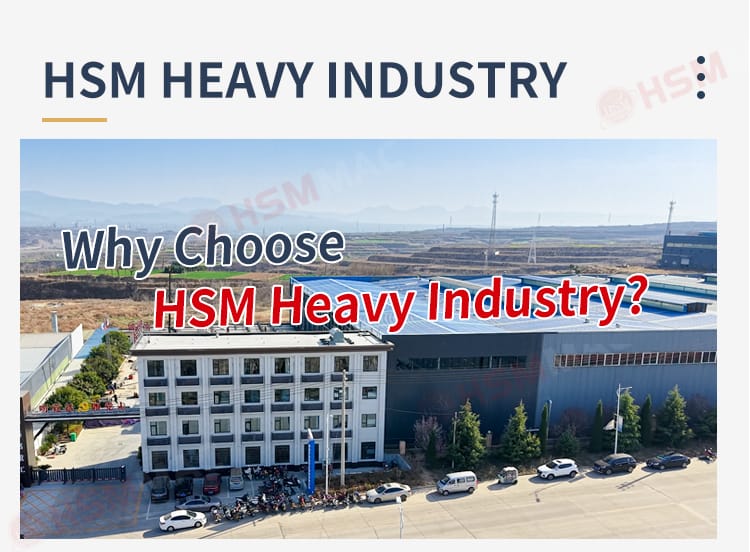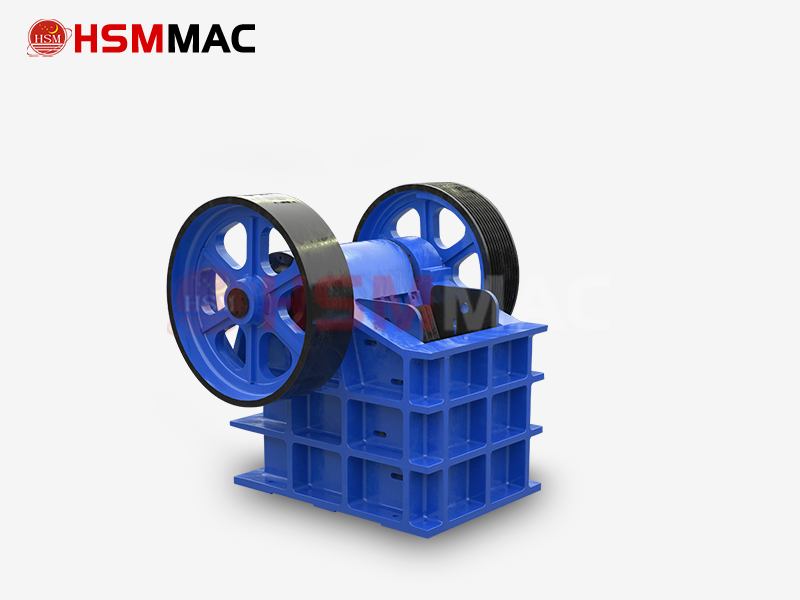The clinker double-roll crusher demonstrates exceptional performance when crushing cement clinker (high-hardness raw material after calcination), with its effectiveness primarily manifested in precise particle size control, low over-crushing rate, high energy efficiency ratio, and strong adaptability. The following is a systematic analysis combining core advantages, technical parameters, practical applications, and selection recommendations:
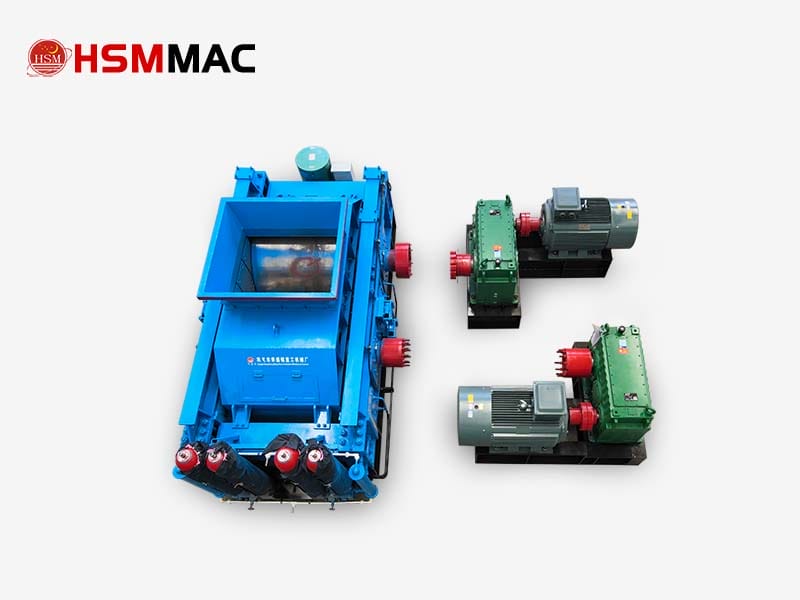
Cement plant double roll crusher
1.Double roller crusher Core crushing performance advantages
Uniform and controllable particle size
Fine adjustment: By adjusting the roller gap via hydraulic or wedge mechanisms (typically 1–30 mm), the output particle size can be precisely controlled within the 1–5 mm range, meeting cement aggregate grading requirements (e.g., 1–3 mm fine particles for high-strength concrete)
High proportion of cubic particles: The compression crushing principle subjects clinker to shear forces, resulting in a cubic particle content of ≥90% in the final product, with intact edges and corners, enhancing aggregate compressive strength (crushing value ≤12%)
Low over-crushing rate: Flexible compression reduces powder generation, with the proportion of 0–5mm fine powder being 30%–50% lower than in impact crushers, reducing resource waste and dust pollution
Highly efficient and energy-saving
Significant production capacity: Small machines (e.g., 2PGT400×250) produce 5–10 tons per hour, while large machines (e.g., 2PGY1800×1600) produce 300–400 tons per hour, suitable for production lines of different scales
Energy consumption reduced by 20%–30%: Low-speed, high-torque design reduces power consumption, while a sealed structure minimizes dust leakage (emissions reduced by 40%–60%). Noise levels are ≤75 dB (≤65 dB with a soundproof enclosure).
High adaptability
Handling of high-hardness materials: Capable of crushing clinker with a Mohs hardness of 7 or higher (compressive strength 160–200 MPa), with special wear-resistant roll liners (e.g., high-chromium manganese steel) lasting 2–3 years
Anti-blocking design: Wolf’s tooth roller surface texture prevents adhesion of high-moisture materials (moisture content ≤5%), hydraulic overload protection automatically removes foreign objects (such as rebar), reducing downtime
2. Double roller crusher Key performance parameters and model recommendations
| Model | Production capacity (t/h) | Feed particle size (mm) | Discharge particle size (mm) | Applicable scenarios | Features |
| Small (2PG400×250) | 5–10 | ≤25 | Adjustable from 1 to 10 | Small cement plants, laboratories | Compact structure, flexible movement |
| Medium (2PG800×800) | 50–80 | ≤80 | Adjustable from 1 to 5 | Medium-sized clinker production lines, aggregate processing | Hydraulic adjustment, 30% energy saving |
| Large (2PG1800×1600) | 300–400 | ≤130 | Adjustable from 1 to 3 | Large cement plants, centralized treatment projects | One-button start/stop, wear-resistant roller skin with a service life of 3 years |
| Customized (Huashengming 1212) | 150–200 | ≤100 | Adjustable from 0.5 to 3 | High-precision sand making, special cement production | Equipped with an intelligent control system, fine powder rate < 10% |
Note: The Huashengming 1510 roller shell is 20 cm thicker and specially designed for basalt clinker, extending its service life to 3 years.
3. Double roller crusher Efficiency Improvement and Maintenance Key Points
Operational Optimization
Control feed particle size: Feed diameter ≤ 1/9 of roller diameter (i.e., D ≥ 9r) to prevent overload caused by oversized clinker lumps
Constant feed rate: Prevent material buildup and blockages, ensuring uniform wear on the roller surface
Moisture management: Pre-dry when moisture content > 5% to prevent mud formation and efficiency loss
Intelligent Maintenance Strategy
Regular tightening and lubrication: Check bolt tightness every 3 months, clean bearings annually, and replace lubricating oil
Roller shell replacement: Modular design supports quick replacement of individual teeth (time ≤ 2 hours), reducing downtime losses
Overload protection: The hydraulic system automatically retracts upon encountering foreign objects such as rebar, preventing equipment damage
4. Double roller crusher Application Scenarios and Economic Analysis
Cement clinker crushing: Produces 1–5 mm aggregate directly usable in C30 or higher concrete, with cubic particles enhancing compressive strength
Recycled aggregate production: Clinker crushing achieves a fine powder rate <10%, improving resource utilization and reducing cement production costs by 30%
Economic analysis: Equipment investment ranges from several hundred thousand to several million, but operational costs are 40% lower than jaw crushers, with a payback period ≤1.5 years
Typical Case Study:
Cement Plant Upgrade Project:
Using the Huashengming 2PGY1200×1500 double-roll crusher to process clinker, with a production capacity of 220 tons per hour, the 1–3mm aggregate is used for high-strength cement, saving over 600,000 yuan in energy costs annually
Clinker Sand Production Line:
The double-roll crusher processes clinker into 0–5 mm manufactured sand with a fineness modulus of 2.6–3.0, replacing natural sand for high-speed rail concrete.
Summary
Clinker double-roll crushers, with their precise and controllable particle size, high proportion of cubic particle shapes, low energy consumption, and strong wear resistance, have become the ideal equipment for clinker crushing. Hydraulic double-tooth roller models (such as the Huashengming 2PGY series) excel in processing high-hardness clinker, while intelligent adjustment systems further enhance efficiency and stability. Selection should be based on production capacity requirements (from small-scale 5 t/h to large-scale 400 t/h) and particle size specifications (coarse aggregate or fine sand), with emphasis on humidity control and regular maintenance to ensure long-term efficient operation.










